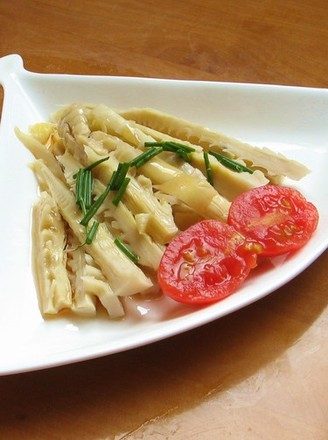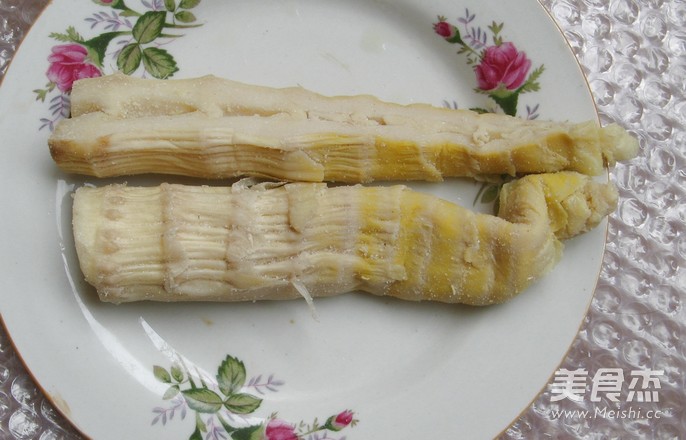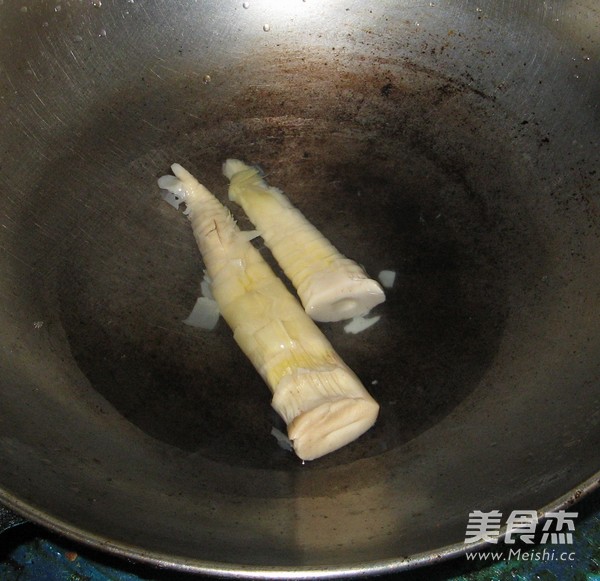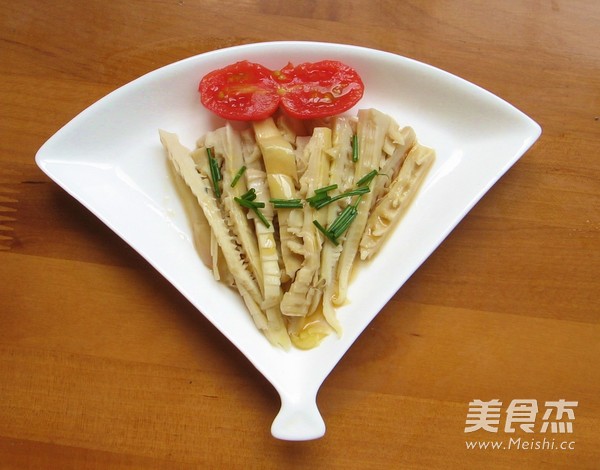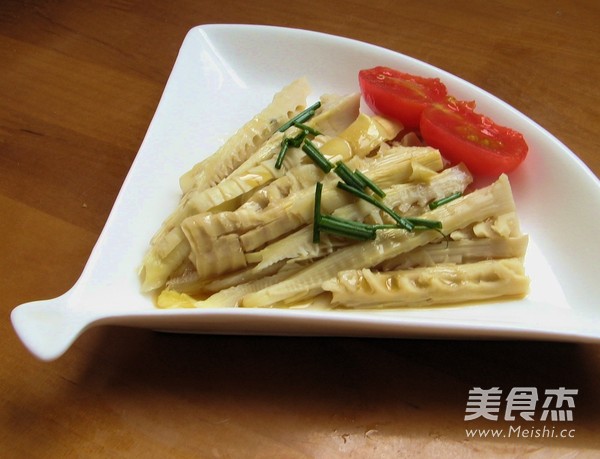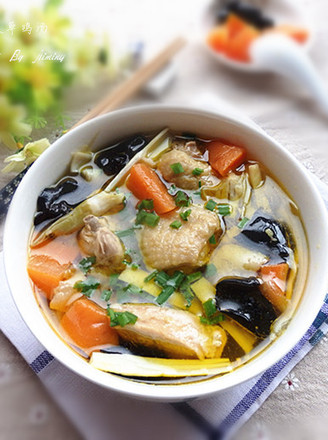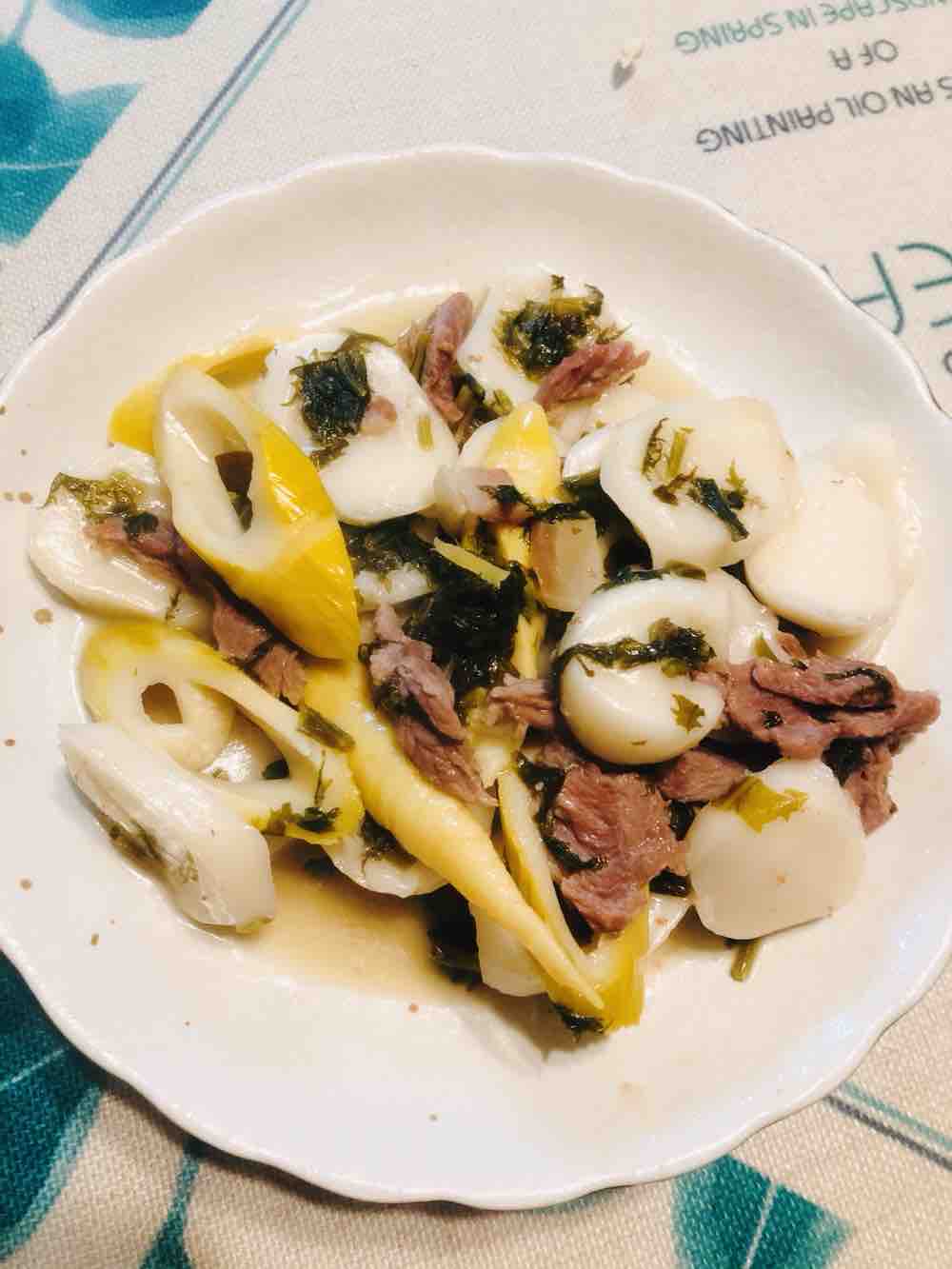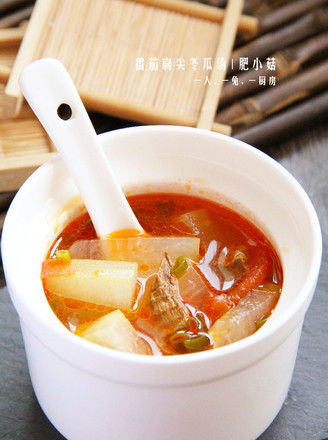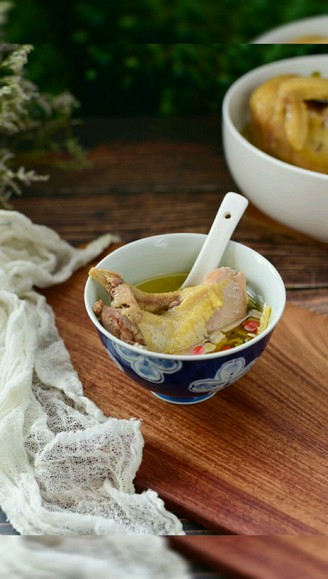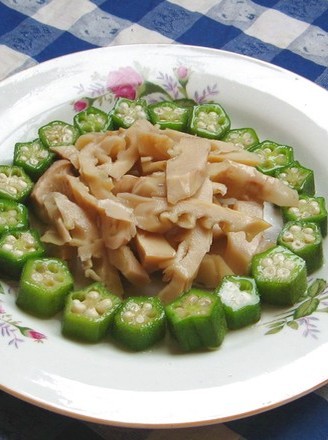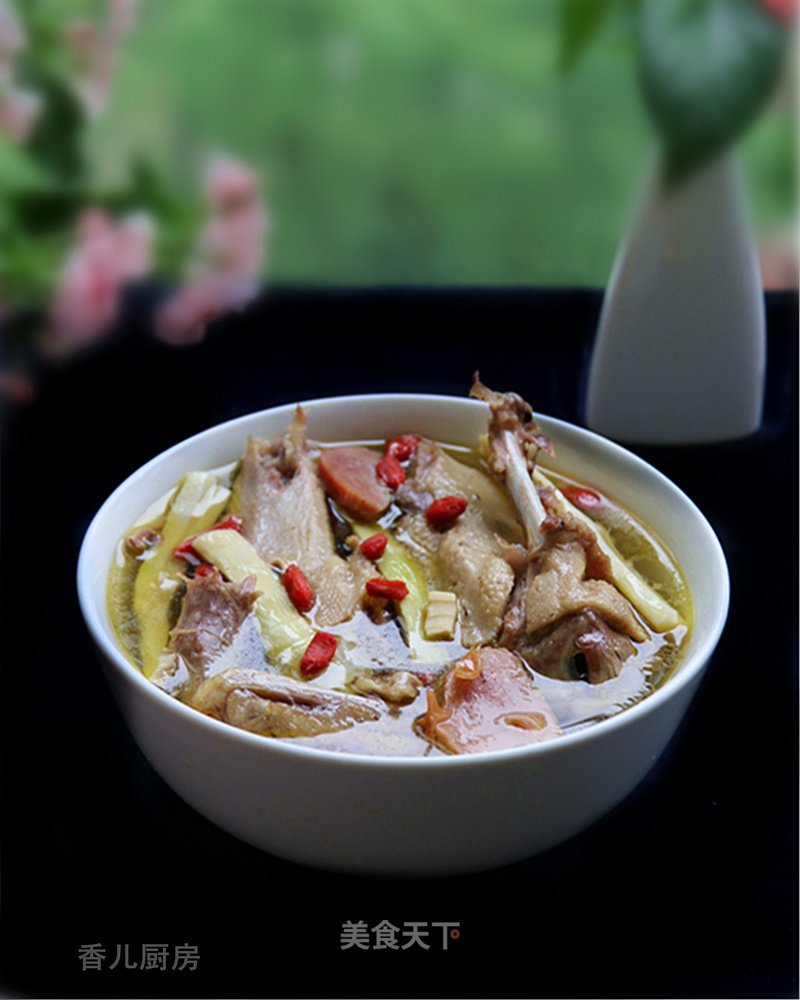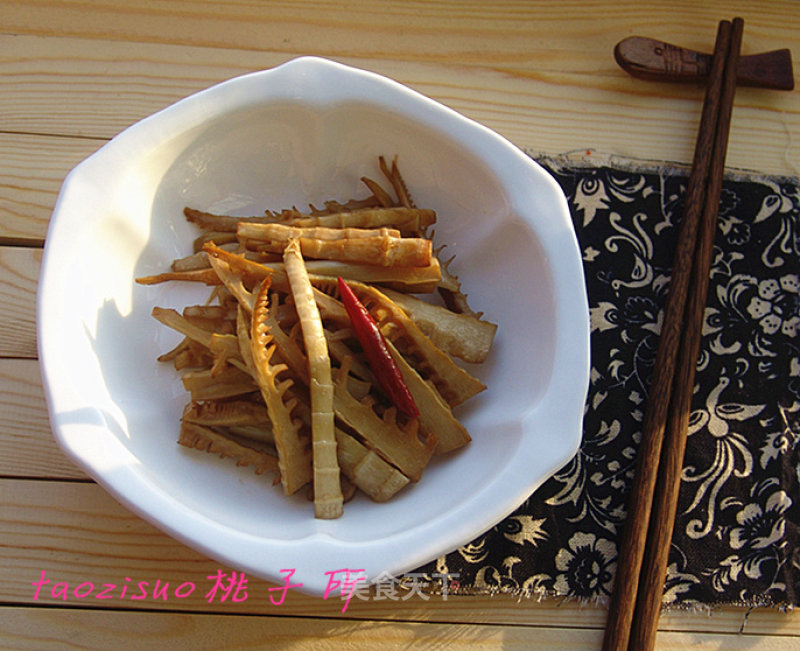Cold Sesame Oil Flat Tip
by Shanghai Spiced Beans
Favorite
Difficulty
Easy
Time
5m
Serving
2
Bianjian can be processed from more than 20 kinds of raw materials, including black-bone chicken shoots, white chicken shoots, red shell shoots, early shoots, stalagmites, water shoots, green shoots and broad shoots.
[Processing and Origin] Bianjian is a processed product of spring bamboo shoots, and there is no distinction between fresh and dried products. The best raw material for its processing is stalagmites. Generally, the collection starts in April of the lunar calendar, the peak season is in the middle of the month, and it ends within the month. Flat tip and spring bamboo shoots are very high-quality cooking ingredients. Spring bamboo shoots are limited by the season, but Bianjian is available on the market all year round, and has the characteristics of not being restricted by the season, easy to transport, and delicious.
Dry product processing: cut the collected fresh bamboo shoots slightly with a knife, peel off the shells, remove the old part, and cook in a pot. Generally, add salt to no more than 4 catties per 100 catties of bamboo shoots. After cooking for 60-80 minutes, take out the drained salt water and spread it out. Place it on a baking stove and slowly roast with charcoal fire, and roast it into a verdant yellow straight tip. The straight tip is then softened with boiling 10% salt water, the bamboo shoots are cut off, and the remaining bamboo shoots are twisted manually to form a spherical shape for drying, and then beaten with a wooden claw to form an oblate shape to make it firm. Only, serve as "flat tip". The flat tip is produced in Zhejiang, Jiangxi, Hunan, Fujian and other places, but the Tianmu Mountain produces the best quality in Jiangsu and Zhejiang.
Chinese bamboo shoots have a long history. There are a lot of records in ancient books such as Suiyuan Shidan, Tiaodingji, and Xianqing Ouji. However, there is no accurate textual research on when the flat tip began to be processed and eaten. According to the "Lin'an County Chronicles", during the Ming Zhengde and Jiajing reigns, the Tianmu Bianjian has been loved by the citizens of the south of the Yangtze River. It has a history of more than 400 years. In the reigns of Emperor Kangxi, Yongzheng and Qianlong of the Qing Dynasty, the Zenyuan Temple in Xitianmu flourished with incense and became a famous Buddhist temple in the south of the Yangtze River. Especially in summer, pilgrims and tourists came from Yuhang Ancient Road one after another, and Tianmu Bianjian became one of the main dishes of the temple’s hospitality. Good men and women are vying to buy them. They are as beautiful as the mountains and rivers, and they come home to taste. The deliciousness is far better than the vegetables. The reputation is widespread and famous. Until the Anti-Japanese War, the grand occasion lasted for more than two hundred years. It spread to Hong Kong, Macao and Southeast Asian countries in the late Qing Dynasty and the early Republic of China, and was deeply loved by the sons of China.
[Processing and Origin] Bianjian is a processed product of spring bamboo shoots, and there is no distinction between fresh and dried products. The best raw material for its processing is stalagmites. Generally, the collection starts in April of the lunar calendar, the peak season is in the middle of the month, and it ends within the month. Flat tip and spring bamboo shoots are very high-quality cooking ingredients. Spring bamboo shoots are limited by the season, but Bianjian is available on the market all year round, and has the characteristics of not being restricted by the season, easy to transport, and delicious.
Dry product processing: cut the collected fresh bamboo shoots slightly with a knife, peel off the shells, remove the old part, and cook in a pot. Generally, add salt to no more than 4 catties per 100 catties of bamboo shoots. After cooking for 60-80 minutes, take out the drained salt water and spread it out. Place it on a baking stove and slowly roast with charcoal fire, and roast it into a verdant yellow straight tip. The straight tip is then softened with boiling 10% salt water, the bamboo shoots are cut off, and the remaining bamboo shoots are twisted manually to form a spherical shape for drying, and then beaten with a wooden claw to form an oblate shape to make it firm. Only, serve as "flat tip". The flat tip is produced in Zhejiang, Jiangxi, Hunan, Fujian and other places, but the Tianmu Mountain produces the best quality in Jiangsu and Zhejiang.
Chinese bamboo shoots have a long history. There are a lot of records in ancient books such as Suiyuan Shidan, Tiaodingji, and Xianqing Ouji. However, there is no accurate textual research on when the flat tip began to be processed and eaten. According to the "Lin'an County Chronicles", during the Ming Zhengde and Jiajing reigns, the Tianmu Bianjian has been loved by the citizens of the south of the Yangtze River. It has a history of more than 400 years. In the reigns of Emperor Kangxi, Yongzheng and Qianlong of the Qing Dynasty, the Zenyuan Temple in Xitianmu flourished with incense and became a famous Buddhist temple in the south of the Yangtze River. Especially in summer, pilgrims and tourists came from Yuhang Ancient Road one after another, and Tianmu Bianjian became one of the main dishes of the temple’s hospitality. Good men and women are vying to buy them. They are as beautiful as the mountains and rivers, and they come home to taste. The deliciousness is far better than the vegetables. The reputation is widespread and famous. Until the Anti-Japanese War, the grand occasion lasted for more than two hundred years. It spread to Hong Kong, Macao and Southeast Asian countries in the late Qing Dynasty and the early Republic of China, and was deeply loved by the sons of China.

